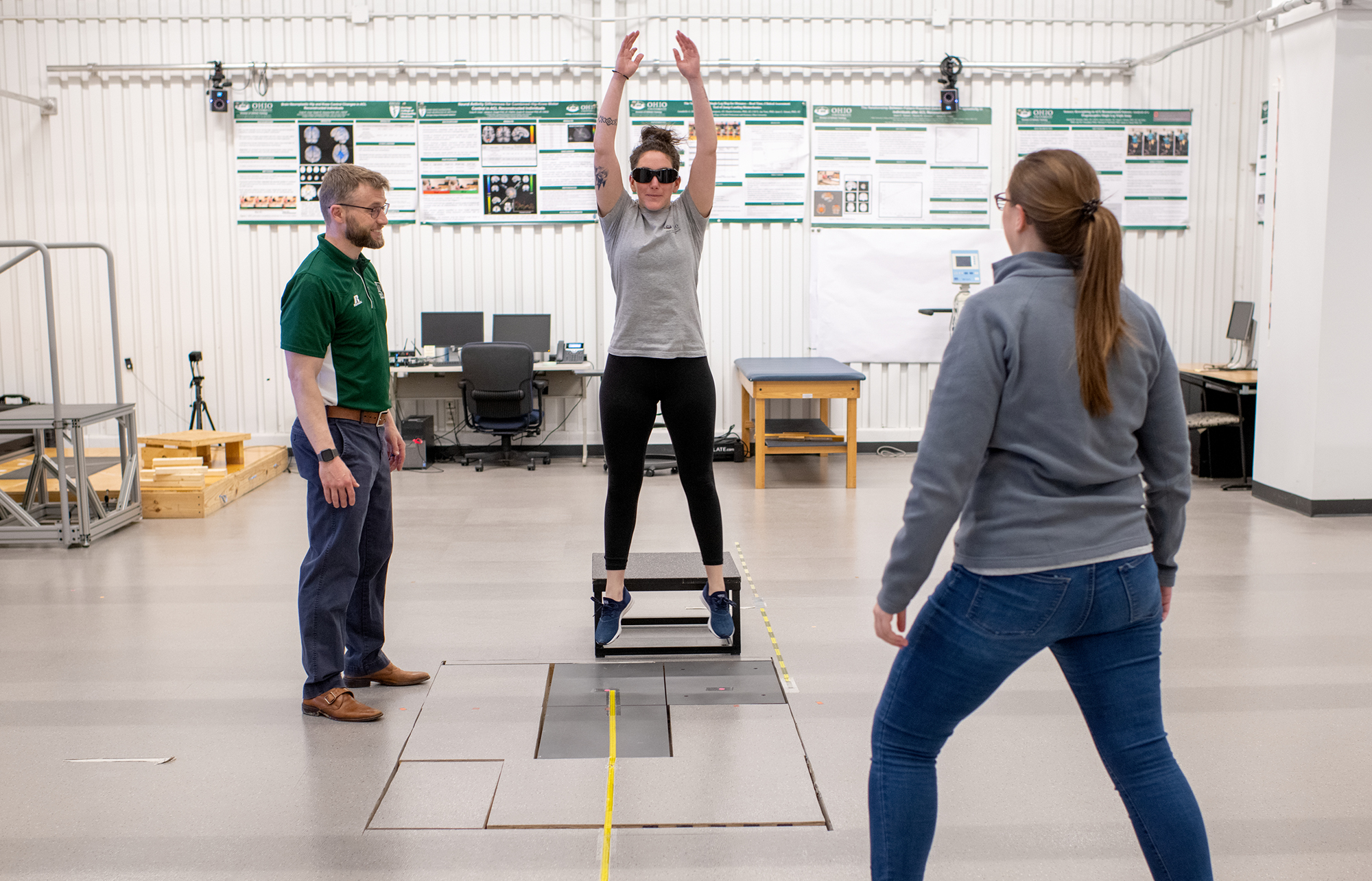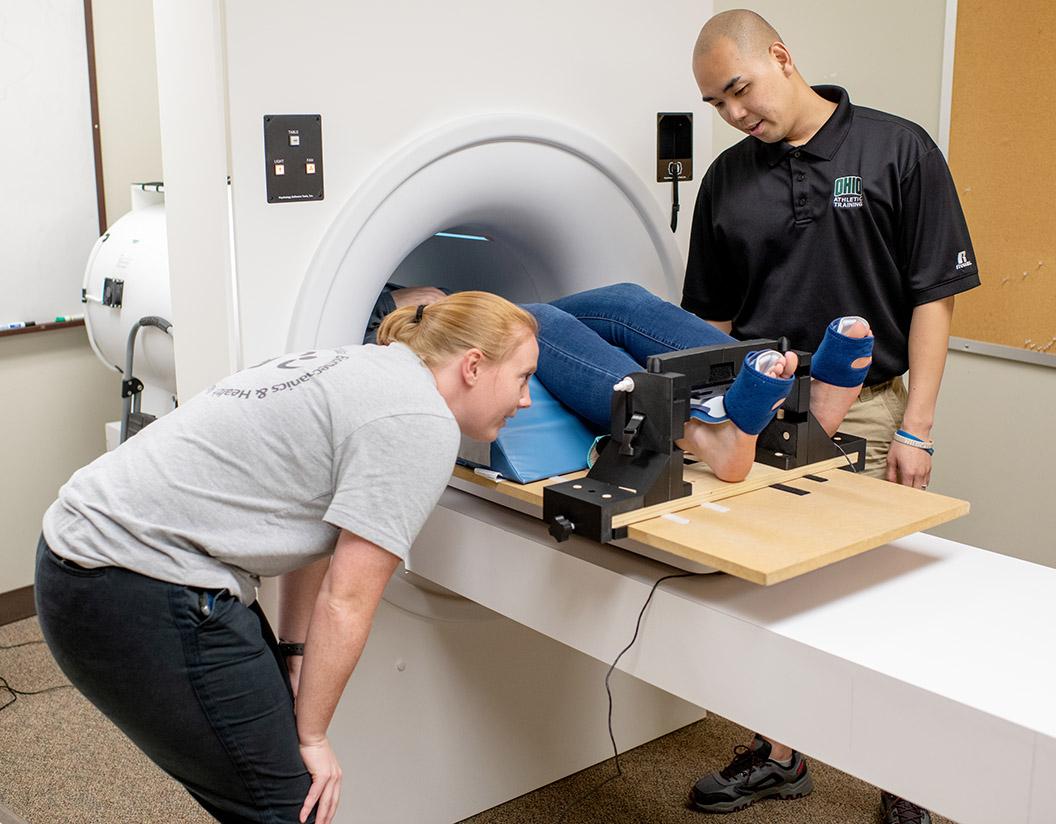Though an injured anterior cruciate ligament (ACL) may appear common and relatively clear-cut, the cascading health effects of an ACL injury are estimated to cost the United States health care system $13 billion a year.
For this reason, the federal government has awarded more than $4 million over the past four years to researchers Dustin Grooms , Ph.D.; Janet Simon , MSRSS ’10; and Brian Clark , Ph.D., from Ohio University’s Ohio Musculoskeletal and Neurological Institute (OMNI) to conduct research on therapies that holistically treat such injuries and thus prevent the long-term health effects that jeopardize one’s overall quality of life.
“While it is not a diagnosis like cancer with immediate mortality or morbidity risk, a severe ligament injury like that of the ACL can result in lifelong reduced quality of life and rapid osteoarthritis development,” said Grooms, a researcher at OMNI and OHIO professor of clinical neuroscience in physical therapy.
Treatment of ACL injuries has historically been limited to work on the ligament and joint in isolation. However, OMNI scientists in their Injury and Pain Research Center are taking a different approach by examining the neurological impacts of such injuries, which have been seldom researched and are not well understood by the medical community at large. Their work is rapidly changing the way ACL injuries are conceptualized and treated.
When someone sustains an injury, the brain takes note so that future movements can accommodate the injury and reduce further damage. From an evolutionary standpoint, this makes perfect sense. For most of human history, if someone sustained a serious injury to a ligament, it is likely that the injury would result in a lifetime handicap, but the nervous system would still try to keep the body functional. With modern medicine, it is now possible to undergo a full recovery and restore the joint. But that evolutionary trait of the brain to log such injuries still exists and in turn acts as a serious inhibitor of recovery.
“We are trying to develop and restore neural activity for movement that remains disrupted with typical therapy,” Grooms said. “There are very few people looking at the nervous system in connection with these injuries, which may explain why therapy is not as effective as we would like.”
One major tool the OMNI team of scientists utilizes to target neurological impacts is virtual reality. Grooms’ research has shown how VR can essentially recondition the brain to overcome the trauma of an injury by exposing it to stimuli it couldn’t receive in the natural world. In theory, if virtual reality can correct the brain, it will drastically reduce the risk of reinjury.
The breadth of the research caught the eye of the federal government, which is funding four major projects through three grants from the National Institutes of Health and one from the Department of Defense .
Degeneration of the knee after an ACL injury is associated with lifelong pain, the development of osteoarthritis and physical activity limitations, directly aligning with NIH initiatives to reduce injury and physical inactivity in youth and adults, which are the fourth-leading cause of global mortality.
“The National Institutes of Health awarded us these highly competitive grants because these injuries contribute to the overall cost of health care and can preserve quality of life if treated effectively,” Grooms said.
This research has also received funding from the U.S. military, where injuries to the ACL are common among service members and can have detrimental effects on military operations. OMNI’s research is promising because unlike other therapies—which are often specialized and expensive—this will be incredibly accessible to service members, with patients being able to access VR modules on their smartphones. In turn, the treatment requires minimal time and resources, allowing for rapid translation from the research to the clinical practice.
This story originally appeared in The Heart of Health: Showcasing Ohio University’s Leadership in Health Education .
Feature photo by Rich-Joseph Facun, BSVC ’01



